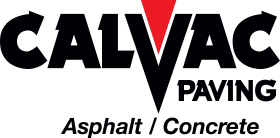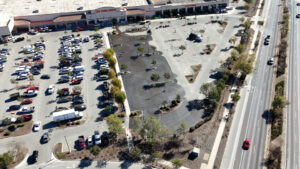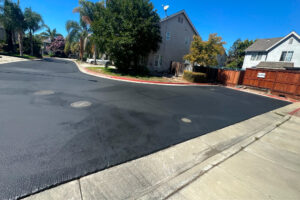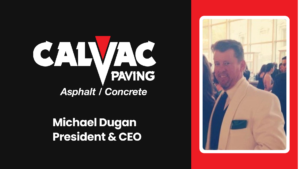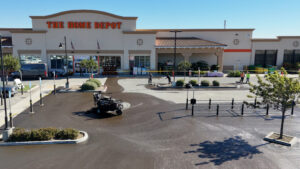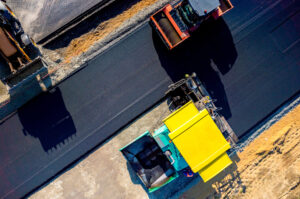See our work on social media:
Repair your Bay Area Parking Lot with Calvac Paving!
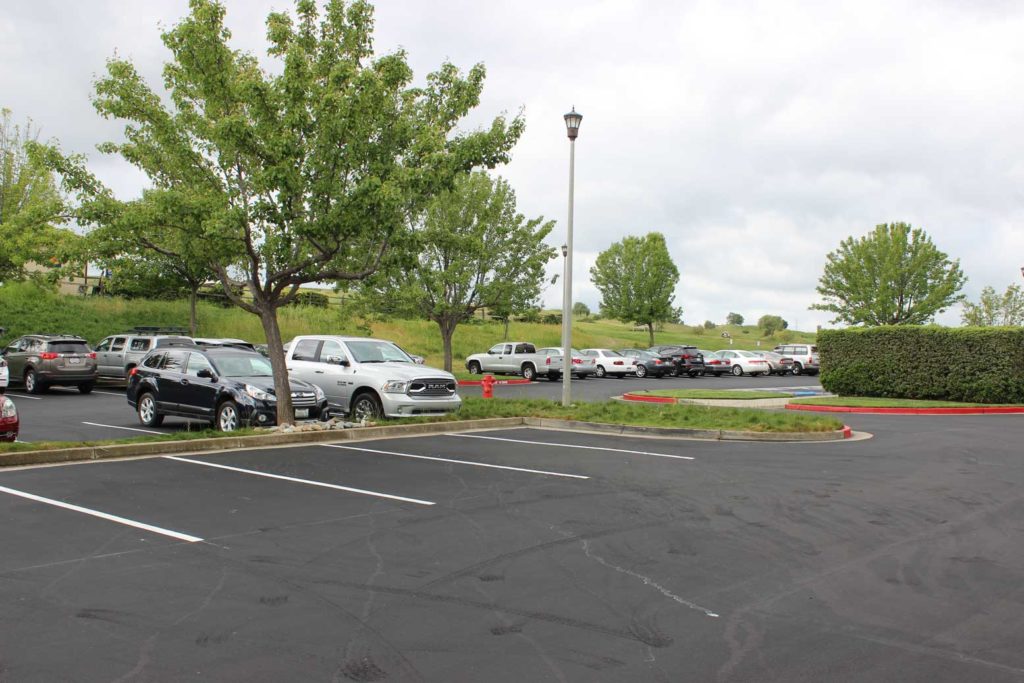
Effective asphalt maintenance is an essential element in keeping curb appeal up and costs down for developers and stakeholders while creating a smooth driving surface. By improving drainage, preventing dirt and debris buildup, and retarding deep crack formation, a proper maintenance program, including regular sealcoat and patch repairs, extends the life of your parking area and helps prevent costlier lot repairs, saving management time and money while leaving you with more happy customer and tenant reviews of the lot’s condition—and your business!
Calvac Paving specializes in asphalt parking lot maintenance which helps prevent alligator cracks, raveling, and deeper cuts caused by cold, water, and UV rays.
In this blog article, we’ll discuss why it’s easier to maintain asphalt parking lots than to have to do a full-scale asphalt repair and how Calvac Paving can help you get the maximum life and performance from your asphalt installation!
Pavement Maintenance 101: Why Does It Matter?
Parking lot maintenance is much easier when the parking lot paving is done right the first time by the paving company. When the asphalt installation is done properly using appropriate paving materials on the suitably prepared ground with a proper drainage plan, you get a permanent surface that performs the way you, and the people who drive on it, expect. This also decreases the likelihood of ruts and depressions developing that could later grow into large potholes, which could require expensive pothole repairs or even complete surface replacement down the road. How the hot mix asphalt’s surface is placed makes a difference too! When done properly, most asphalt parking lots are placed in at least two layers of material, known as “lifts.” Each layer, or lift, will usually be left at least one inch thick after the placement and compaction phase, although this depends on the type of traffic and design elements the project calls for. This two-lift placement creates a smooth, stable base for your parking lot paving, which is flexible enough to withstand traffic wear while still being durable enough to stand up to both environmental and human-driven conditions. Often, a series of test protocols are carried out to ensure the paving contractor is using the right materials and placing them in the correct manner to make the surface as durable as possible. In many cases, a hot pour sealcoat, or asphalt overlay, is applied after final compaction but before the line striping is done to further preserve the surface. Drainage is important because it helps prevent rain, snow, ice, dirt, and other weather-related debris from building up on, and penetrating into, the asphalt surface. Regular pressure washing in conjunction with good drainage helps ensure this type of debris, plus vehicular fluids such as leaking gas and oil, carelessly discarded food waste left behind by visitors, and decaying vegetation like fallen leaves are washed away before they can damage the asphalt’s surface or degrade the parking lot striping through oxidation or acid erosion. Once this type of damage begins, it can quickly lead to parking lot cracks and asphalt paving failure. Even with the relatively mild temperatures and weather in the Bay Area, freeze-and-thaw patterns can quickly turn a minor crack just an inch or two long into a much larger and more expensive headache for your property and roadway safety.
I Have a Crack in My Asphalt. Now What?
A well-maintained parking area doesn’t happen by accident. Keeping a close eye on your pavement, especially around concrete curbs and gutters, seams, and drainage courses, is a critical component of parking lot maintenance which can help you detect developing problems early so they can be taken care of. Parking lot cracks can be easily dealt with using a hot rubberized crack filler, which helps seal the crack and prevent it from growing larger or spawning new tributary cracks. Because it requires less personnel and equipment, parking lot crack sealing also tends to be much cheaper than having to do a patch repair on a failed area of asphalt, a pothole repair, or asphalt milling and resurfacing a new top course, including fresh asphalt sealcoating. This type of crack repair also generally takes a lot less time and is less intrusive to the traffic flow of your business.
As a best practice for parking area maintenance, it’s usually a good idea for you or your maintenance staff to walk your lot at least once every month just to check if your parking area needs lot repair.
When you identify areas that could lead to cracks and potholes, such as an area of cracked sealing, you should contact Calvac Paving right away so we can get you the best possible asphalt solutions before the problem gets out of hand. Sometimes repairing the issue can be as simple as applying crack filler or hot or cold patch asphalt to shore up a weak area. Like a crack filling, asphalt patching in one or two isolated is a whole lot less expensive, intrusive, and time-consuming than it is to repair or replace an entire parking area!
If you need parking lot maintenance and repairs, contact Calvac Paving today!
Calvac Paving is proud to be the Bay Area’s industry-leading source for concrete paving and asphalt solutions that really go the distance. Some of our services include
- ADA Accessibility Compliance
- Design-Build Paving Projects
- Concrete maintenance
- Concrete repair
- Lot maintenance and repairs
- Parking garage maintenance
- And much more!
Whether you need a simple parking lot crack repair or a complete roadway build from native ground to finished product, Calvac Paving is ready and able to serve you. Simply click here to contact us, and be sure to check out our project gallery for some examples of the quality work you can expect from Calvac Paving for your paving repairs and all your other asphalt and concrete needs. And to learn more about parking lot repairs and why they matter, keep reading for our answers to frequently asked questions by property owners and contractors just like you!
Frequently Asked Questions About Parking Lot Repair by Calvac Paving
Calvac Paving is here to help with straight answers and honest information about your paving needs, big and small!
Question: What Causes Alligator Cracks, And How Do I Know I Need Parking Lot Repairs Because Of Them? –Srinivas, East Oakland, CA
Answer: Alligator cracks, which take their name from their resemblance to the scaly hides of alligators, usually form because the subgrade wasn’t properly placed or compacted or because the material under the asphalt has been undermined by water and debris infiltration. If you notice alligator cracks in your parking lot, you definitely need to have the area repaired as soon as possible before it becomes a pothole—or worse. In cases like this, one common approach is to cut out the failing section, rework and recompact the subgrade, and then place a patch over the affected area. This approach helps to shore up the failed area and prevent the damage from spreading further. However, it may not be necessary to take such drastic action in all cases, which is why you should have a qualified contractor like Calvac Paving evaluate the situation before you take action.
Question: Can I Do Parking Lot Repair Myself? –Justin, Sunnyvale, CA
Answer: Depending on the type of issue you’re having, it’s possible—but you’re probably not going to get the same results as you would by engaging an experienced contractor to take care of it for you. This is not to say you’re not perfectly capable, but you likely don’t have access to the tools, machinery, or personnel to get the job done right and make sure it doesn’t become a recurring issue. More importantly, while a DIY video on YouTube makes repairs like this look straightforward and simple, they can be challenging and lead to further problems if they’re not addressed properly. Ultimately, you’ll get better and more reliable results using an experienced contractor like Calvac Paving than if you try to handle the issue yourself!
Question: How Does Maintenance Prevent Parking Lot Repair? –Judith, Palo Alto, CA
Answer: Just like your home or your car, preventative maintenance, like keeping your parking areas free of debris and chemical spills, can help extend its lifespan and ensure optimum performance longer. For example, if you had a crack in a window, you’d likely notice a higher energy bill and poorer performance from your climate control. In the same way, a small crack in your paving can lead to a big problem down the road because asphalt isn’t self-healing, and cracks don’t get smaller over time. Instead, they get wider and deeper, and if allowed to continue, can lead to serious failures such as potholes and even subgrade degradation. That’s why it’s so important to take care of issues like this early before they have a chance to grow and spread into more serious issues!
Question: What should I look for when I’m doing parking lot maintenance to avoid needing parking lot repair later? –Adam, Mountain View, CA
Answer: Some key points to look at when you’re doing parking lot maintenance include items like:
Is The Area Clear Of Debris, Including Discarded Food And Other Organic Material?
As organic materials decay, they release chemicals that can eat away at the asphalt sealcoat and, later, the asphalt itself. A blob of ketchup from a carelessly discarded packet may not seem like a big deal, but that tiny blot of tomato paste could lead to a pothole years later, which is why it needs to be cleaned up as soon as possible.
Do You Notice Dirt Or Sediment Building Up Along Drainage Channels?
This could be an indication of warping in the asphalt matrix and/or a clogged storm drain, which could lead to asphalt failure if it’s not attended to promptly.
Do You See Motor Oil Or Other Vehicle Fluids On The Paving?
Like organic material, over time, these can eat away at the bituminous (tar) binding that gives asphalt its flexibility. This makes them particularly inimical to even the most perfectly executed paving jobs. It’s important to clean up such spills quickly, so they don’t have a chance to cause problems that could lead to expensive repairs later! For more information on parking lot repair and preventative steps you can take to keep your asphalt and concrete paving up to the task of providing a safe, smooth surface for traffic and pedestrians alike, click here to contact Calvac Paving!
Company
Services
Contact us
© 2025 All Rights Reserved.
